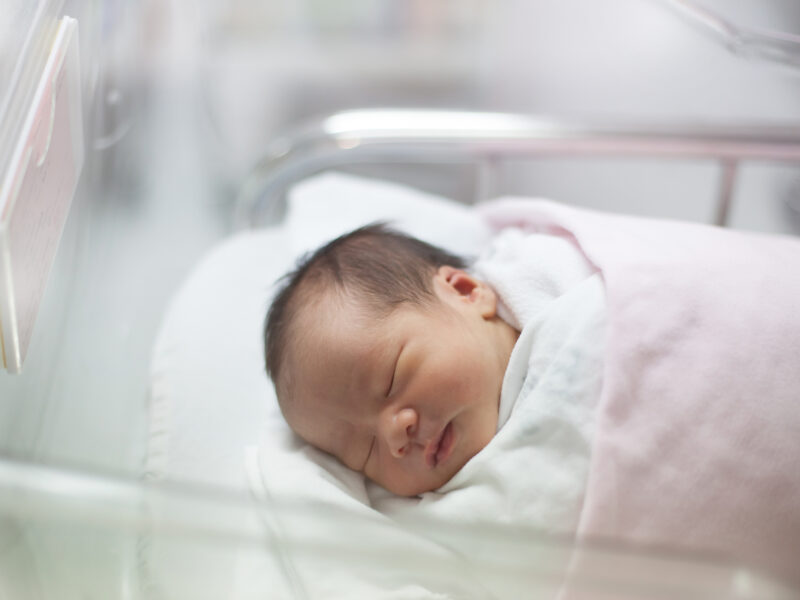Surprise Finding in Respiratory Syncytial Virus Infection Viral Load Study
Surprise Finding in Respiratory Syncytial Virus Infection Viral Load Study https://pediatricsnationwide.org/wp-content/themes/corpus/images/empty/thumbnail.jpg 150 150 Lauren Dembeck Lauren Dembeck https://pediatricsnationwide.org/wp-content/uploads/2021/03/Dembeck_headshot.gif- October 21, 2019
- Lauren Dembeck
Understanding viral load dynamics can help inform treatment decisions
Respiratory syncytial virus (RSV) lower respiratory tract infection is a leading cause of hospitalization and mortality in infants worldwide, but a licensed RSV vaccine has not yet been developed, in part due to the incomplete understanding of RSV pathogenesis.
While investigating the relationship between RSV viral loads and disease severity in infants, researchers at Nationwide Children’s Hospital found that higher viral loads at presentation and a faster and consistent viral load decline were associated with less severe RSV disease.
“This is counterintuitive because you would expect that greater amount of virus in nasal secretions during the acute infection would be associated with more severe disease, but this is not the case with RSV, it appears that higher RSV loads trigger a more robust immune response than in turn is associated with better outcomes,” says Asuncion Mejias, MD, PhD, senior author of the study and principal investigator in the Center for Vaccines and Immunity at The Abigail Wexner Research Institute at Nationwide Children’s Hospital.
The findings, published in The Journal of Infectious Diseases, were from a prospective, single-center study conducted at Nationwide Children’s. A total of 150 children who were <2 years of age: 39 outpatients with mild RSV disease and 111 inpatients with severe RSV bronchiolitis were enrolled in the study between February 2015 to March 2017. The study compared viral loads and disease severity among outpatients and inpatients in the ward and the pediatric intensive care unit (PICU).
When adjusting for age Dr. Garcia-Mauriño, MD, a postdoctoral fellow in Dr. Mejias lab and first author of the study, found that results were reproducible and that infants of similar ages with RSV infection and a mild disease phenotype had higher RSV loads at presentation that their counterparts with severe RSV infection. Additionally, after excluding infants treated with steroids, those hospitalized in the ward had also higher viral loads than those in the PICU with more severe disease.
In the study, for all inpatients, nasal swabs for RSV quantification were collected daily. Analysis of the viral load dynamics indicated that viral load decay was delayed in patients in the PICU and, even more so, in the infants who had been treated with steroids.
“In the inpatient setting, patients that received systemic steroids, which are not routinely indicated for the management of RSV infection, cleared the virus at a slower pace and had worse outcomes,” says Octavio Ramilo, MD, chief of Infectious Diseases and principal investigator in the Center for Vaccines and Immunity at Nationwide Children’s. “This observation is specifically relevant for children with severe RSV infection hospitalized in the PICU, for whom treatment with steroids should be avoided.”
Following up on this study, Dr. Mejias and her team are planning to assess viral load dynamics in the outpatient population and to continue identifying factors contributing to the severity of the disease. A precise understanding if these factors may help to identify the optimal therapeutic window and target population for interventions against RSV infection.
Reference:
Garcia-Mauriño C, Moore-Clingenpeel M, Thomas J, Mertz S, Cohen DM, Ramilo O, Mejias A. Viral Load Dynamics and Clinical Disease Severity in Infants With Respiratory Syncytial Virus Infection. Journal of Infectious Disease. 2019 Apr 8;219(8):1207-1215.
About the author
Lauren Dembeck, PhD, is a freelance science and medical writer based in New York City. She completed her BS in biology and BA in foreign languages at West Virginia University. Dr. Dembeck studied the genetic basis of natural variation in complex traits for her doctorate in genetics at North Carolina State University. She then conducted postdoctoral research on the formation and regulation of neuronal circuits at the Okinawa Institute of Science and Technology in Japan.
-
Lauren Dembeckhttps://pediatricsnationwide.org/author/lauren-dembeck/
-
Lauren Dembeckhttps://pediatricsnationwide.org/author/lauren-dembeck/
-
Lauren Dembeckhttps://pediatricsnationwide.org/author/lauren-dembeck/
-
Lauren Dembeckhttps://pediatricsnationwide.org/author/lauren-dembeck/January 29, 2019
- Posted In:
- In Brief







